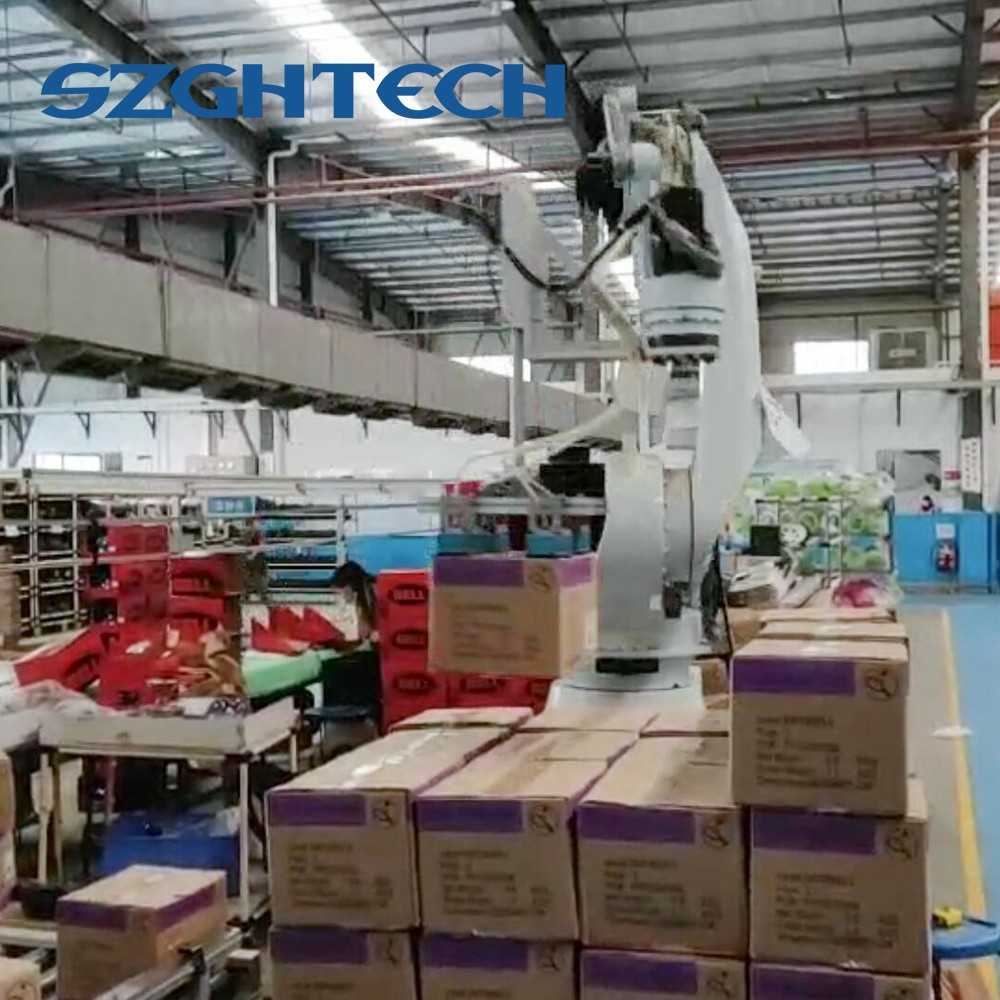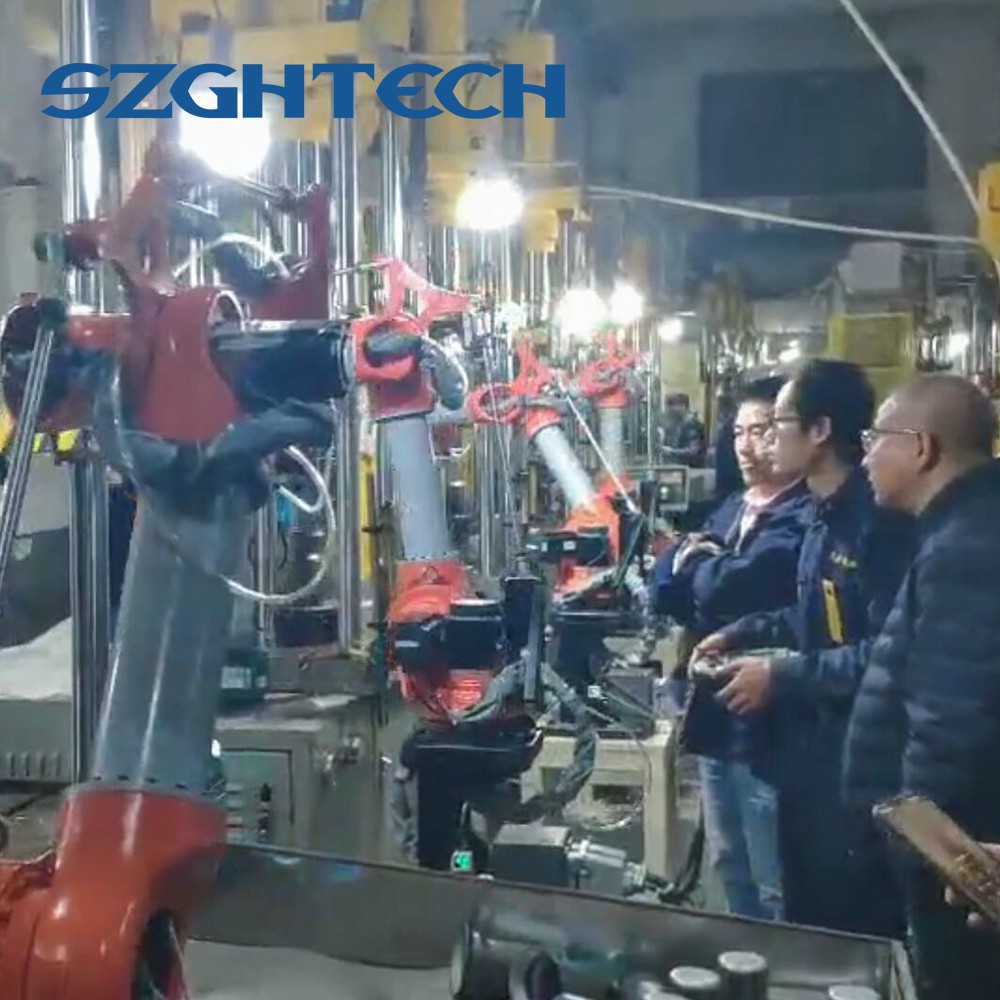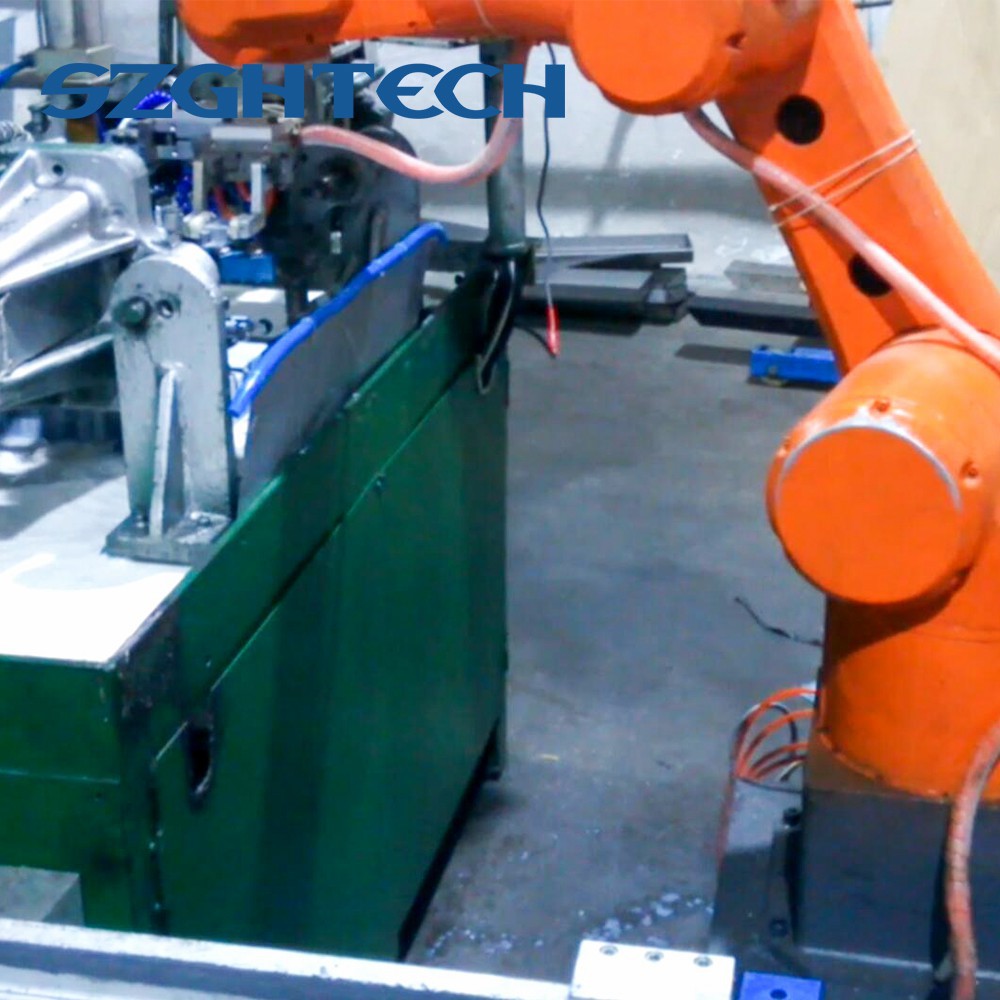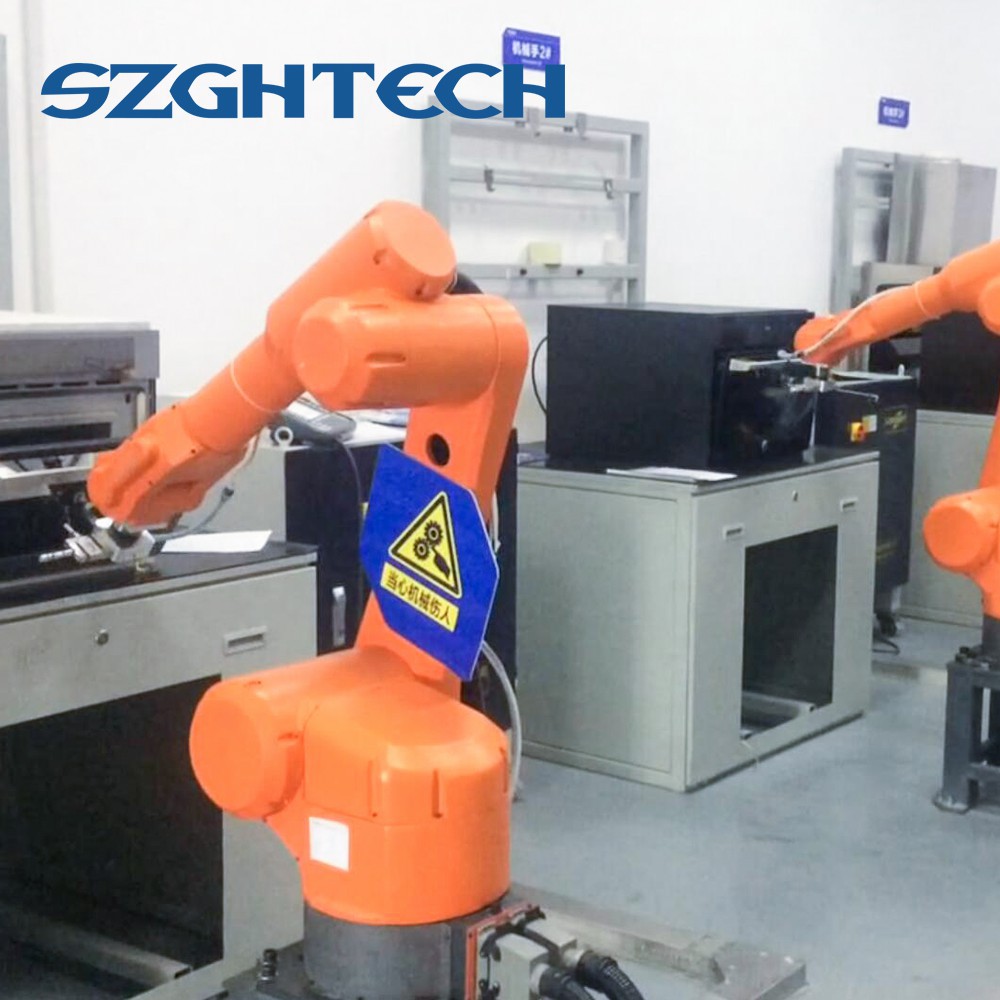With the successive proposals and deepening of "Industry 4.0" and "Made in China 2025", the global manufacturing industry is developing in the direction of automation, integration, intelligence and greening. As the world's largest manufacturing country, China's intelligent manufacturing marked by industrial robots has become more and more widely used in various industries. Below, we will introduce the ten application fields of industrial robots.

1. Metal forming: Metal forming machine tools are an important part of machine tool tools. Forming processing is usually associated with high labor intensity, noise pollution, metal dust, etc. Sometimes it is in a high temperature, high humidity or even polluted environment, and the work is simple and boring. It is difficult for enterprises to recruit people. The integration of industrial robots and forming machine tools can not only solve the problem of enterprise employment, but also improve processing efficiency, precision and safety, and has great room for development.

In the field of metal forming, industrial robots mainly include integrated applications of CNC bending machines, integrated applications of press stamping, integrated applications of hot die forging, and welding applications.
2.Automobile manufacturing: In China, 50% of industrial robots are used in automobile manufacturing, of which more than 50% are welding robots; in developed countries, automotive industrial robots account for more than 53% of the total number of robots. According to statistics, the world's major automobile manufacturers have more than 10 robots for every 10,000 vehicles produced annually.

With the continuous development and perfection of robot technology, industrial robots will definitely play a great role in promoting the development of automobile manufacturing industry. However, China is moving from a big manufacturing country to a manufacturing powerhouse. It needs to improve processing methods, improve product quality, and increase corporate competitiveness. All of this indicates that robots have a huge development prospect.
3. Electronic and electrical industry: Electronic ICs, patch components, and industrial robots are widely used in these fields. At present, the most installed industrial robot in the world industry is the SCARA four-axis robot. The second place is the tandem articulated vertical 6-axis robot. Luo Baihui pointed out that these two types of industrial robots, which exceed half of the global installed capacity of industrial robots, are the focus of our attention.
In the field of mobile phone production, visual robots, such as sorting and packing, film tearing systems, laser plastic welding, high-speed four-axis palletizing robots, etc., are suitable for the application of automation systems for a series of processes such as touch screen inspection, scrubbing, and film application.

The robots in the special area are all specially made by domestic manufacturers according to the needs of the electronics production industry. The characteristics of miniaturization and simplification realize the high-precision and efficient production of electronic assembly and meet the increasingly refined needs of electronic assembly and processing equipment, while automated processing is more It greatly improves production efficiency.

4. Rubber and plastic industry: From the automobile and electronics industry to the consumer goods and food industry, there are plastics. Plastic raw materials are processed into fine and durable finished or semi-finished products through injection molding machines and tools. This process often requires industrial robots.

Industrial robots are not only suitable for operating under clean room environmental standards, but also can complete high-intensity operations next to injection molding machines to improve the economic benefits of various processes. The advantages of industrial robots such as fast, efficient, flexible, durable and strong load-bearing capacity ensure the competitive advantage of plastic enterprises in the market.
5. Foundry, metallurgical industry: The operation of the foundry industry puts a heavy burden on workers and machines, because they need to perform multi-shift operations in extreme working environments such as high pollution, high temperature, and gravity. Therefore, green foundry is valued and promoted by more and more enterprises.
The foundry industry extends from pouring and handling to cleaning and stacking. Industrial robots can be used to improve the working environment, improve work efficiency, product accuracy and quality, reduce costs, reduce waste, and obtain flexible, high-speed and durable production processes. , to meet the special requirements of green casting.

Whether it is light metals, colored metals, precious metals, special metals, or steel... the metal industry cannot do without foundries and steel/metal processing. And without automation and multi-shift operations, it is impossible to ensure economical and competitive production and relieve employees of heavy workloads.
The main scope of work of industrial robots in the metallurgical industry includes machining processes such as drilling, milling or cutting, as well as bending and stamping. In addition, it can shorten the working cycle of welding, installation, loading and unloading process and improve productivity.
6. Food industry:Food products tend to be refined and diversified. There are fewer and fewer single-variety and large-batch products, while multi-variety and small-batch products are increasingly becoming the mainstream. Most of the packaging work in domestic food production plants, especially the arrangement and assembly of more complex packaging items, is basically manual operation, which is difficult to ensure the uniformity and stability of packaging, which may cause pollution to the packaged products. The application of robots can effectively avoid these problems. By integrating multiple high-tech technologies such as sensor technology, artificial intelligence and robot manufacturing, the robot system can automatically adapt to various changes in product processing and truly realize intelligent control.
![PG]YMK[ZZDAW(4K8L_XSWXL PG]YMK[ZZDAW(4K8L_XSWXL](/Content/uploads/2022748886/2022112214195129fae2ef3c2b492e99920e19fb4d0ffd.png)
The application of industrial robots in food mainly focuses on several types: packaging robots, picking robots, palletizing robots, and processing robots. At present, the food industry robots have been developed, including packaging and canning robots, automatic lunch robots and beef cutting robots.
7. Chemical industry:The chemical industry is one of the main application areas of industrial robots. Faced with the requirements of precision, high purity, high quality and miniaturization of modern chemical products, the production environment requires a clean environment, and clean technology directly affects the pass rate of products. Therefore, in the field of chemical industry, as more and more chemical production occasions have higher and higher requirements for environmental cleanliness in the future, cleaning robots will be further utilized, so they have a broad market space.

8. Glass industry: Whether it is hollow glass, flat glass, tubular glass, or glass fiber - modern, mineral-containing high-tech materials are very important components in the electronics and communication, chemical, pharmaceutical and cosmetic industries. And today it is also indispensable for the construction industry and other branches of industry. Especially for glass with very high cleanliness requirements, industrial robots are the best choice.

9. Household electrical appliance industry: The large-scale equipment field of white household appliances has higher and higher requirements on economy and productivity. Reducing process costs and improving production efficiency have become top priorities, and automation solutions can optimize the production of household appliances. Whether mass-producing washing machine drums or glazing bathtubs – production, processing, handling, measuring and inspection tasks can be carried out more cost-effectively with robots. It can complete production tasks continuously and reliably without frequent transfer of heavy parts. This ensures a smooth flow of material along the production line – and always at a constant high quality.

10. Tobacco industry: The application of industrial robots in my country's tobacco industry appeared in the mid-1990s. Yuxi Cigarette Factory used industrial robots to stack its finished cigarettes, and used AGV (self-propelled trolley) to move finished product trays, saving a lot of manpower. The damage of the smoke box is reduced, and the automation level is improved.

Advanced production equipment must be equipped with corresponding management methods and logistics support systems in order to truly exert the high efficiency of the equipment. For example, the distribution of cigarette raw materials and auxiliary materials requires an advanced automated logistics system. Traditional manual management and manual handling It is extremely error-prone and not punctual, so it can no longer meet the needs of production development. Precise industrial robots are used in this field.

